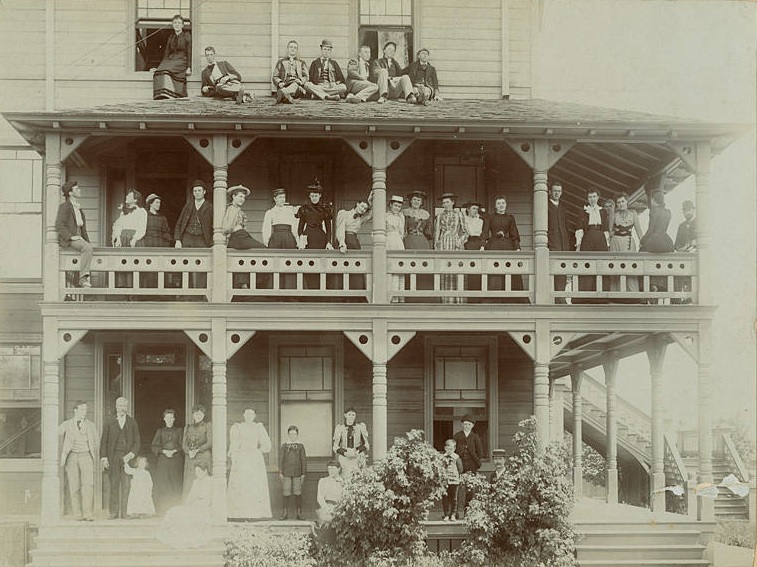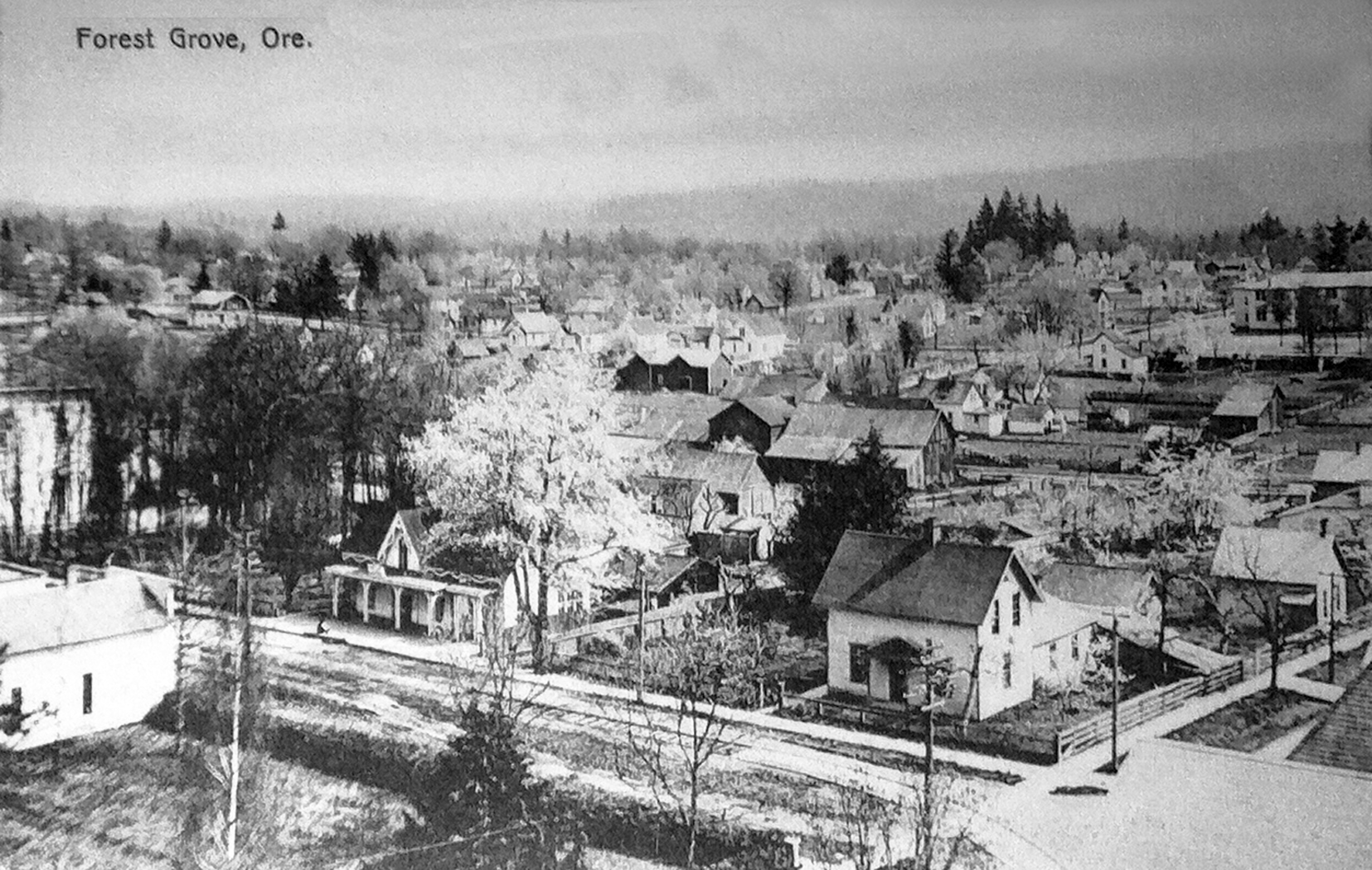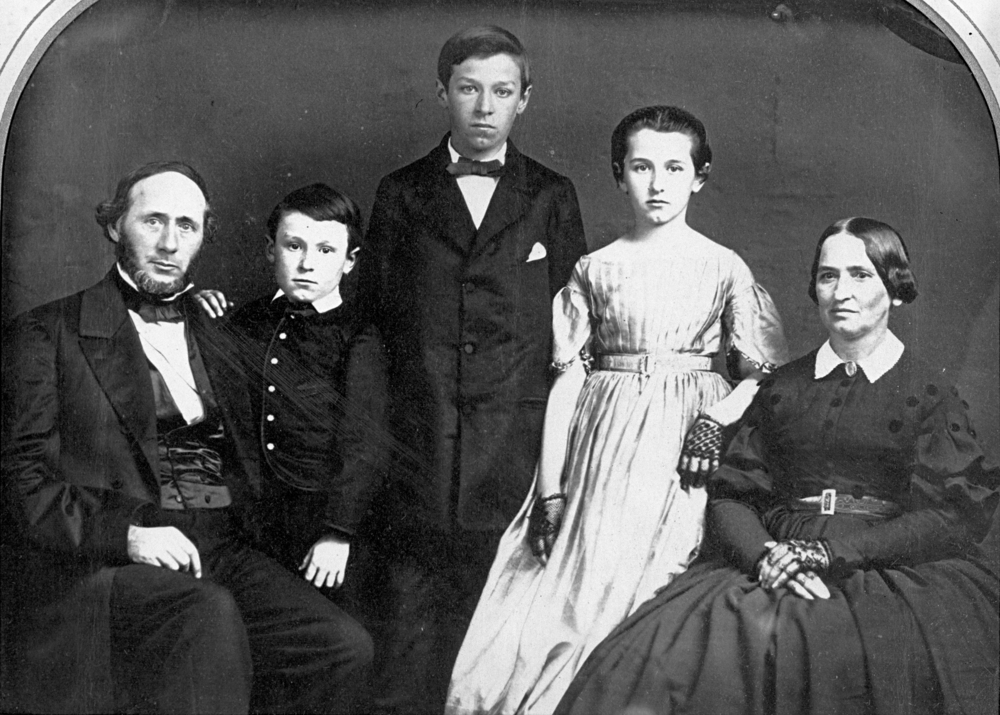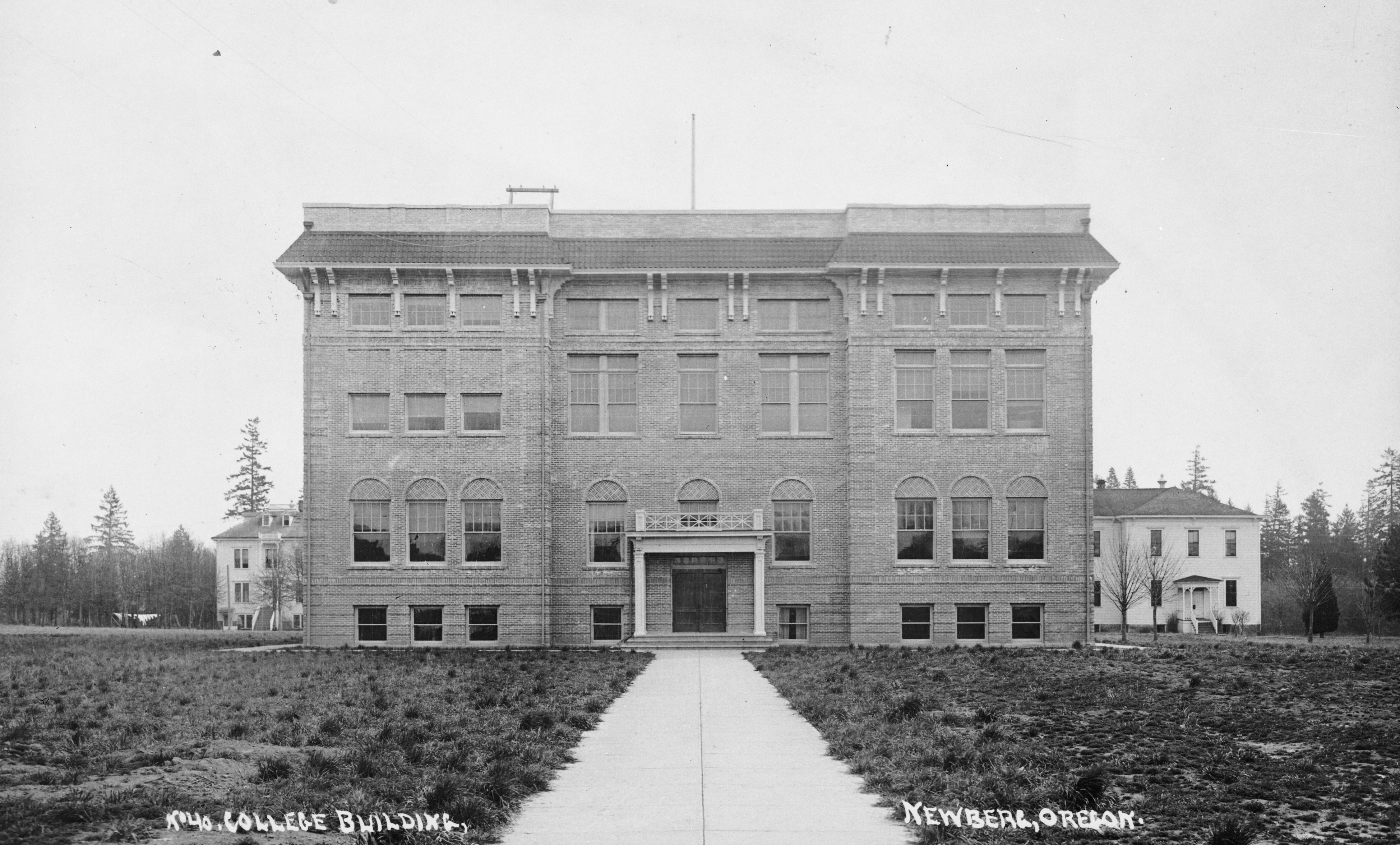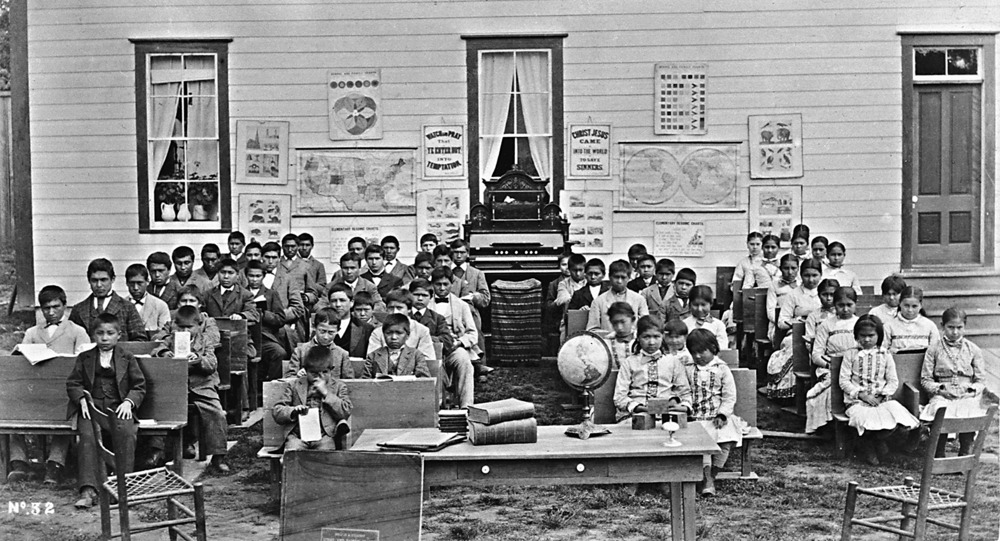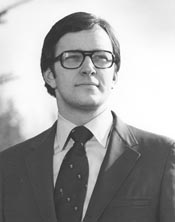Pacific University, one of the oldest universities in the American West, was founded in 1849 in present-day Forest Grove, about twenty-five miles west of Portland. The institution began as Tualatin Academy and was a school for the children of early resettlers in the area. The academy created Pacific University in 1854 and offered college classes. The academy and university were affiliated with the Congregationalist Church (now known as the United Church of Christ), a historic tie that Pacific University maintains today. The university is known for its undergraduate liberal arts program; its programs in optometry, health professions, and education; and its tradition of community service. The National Science Foundation ranked it as the number one private research institute in the Pacific Northwest from 2018 to 2022.
Pacific University had its beginnings in the Tualatin Plains, a few miles from Wapato Lake and in the homeland of the Tualatin Kalapuya people, who inhabited several villages in the region in the early nineteenth century. One of the first white settlers to arrive in the area in the early 1840s was Harvey Clark, a missionary and graduate of Oberlin College in Ohio. He and his wife Emiline had immigrated to Oregon Country hoping to convert and educate the Indigenous people who lived there. They operated a school out of their home to educate Native children, but their efforts were unsuccessful. By the 1850s, disease epidemics had decimated the Tualatin, and by 1855 only sixty-five Tualatin Kalapuyan survived. In 1856, the U.S. government removed remaining bands to the Grand Ronde Reservation.
In 1847, Tabitha Brown, a sixty-seven-year-old woman who had survived a disastrous crossing of the Oregon Trail, told Harvey Clark about her desire to open an “orphan asylum” where she could care for and teach the abandoned and orphaned children of resettler families. In the spring of 1848, he helped her find space for the Oregon Orphans’ Asylum and School in a log house in the Tualatin Plains.
At about the same time, several missionaries—including the Walker, Eells, and Spalding families—moved into the area, having fled their mission posts east of the Cascades after the 1847 Whitman murders. Together with George Atkinson, a pastor in Oregon City, they began discussions about expanding the orphan school. Atkinson, an experienced education administrator, had the organizational skills to open “a seminary of learning for the instruction of both sexes in sciences and literature.” Most of the school’s founders were Congregationalists, a denomination that emphasized education.
The Territory of Oregon granted the Tualatin Academy its charter in 1849. A year later, local community members donated land, and the Academy’s trustees donated money for the school’s construction. Area residents raised the Academy’s first building (now called Old College Hall). Beginning with the influence of its first president, Sidney Harper Marsh, Pacific has always been nonsectarian, and women and men attended classes together from the start. In the 1870s, three students arrived from Japan, and Pacific became one of the first universities in the western United States to enroll Asian students. The first Native students enrolled in Tualatin Academy in the 1880s. Especially since the 1950s, Pacific University has purposefully had a diverse student body. In the 2020s, approximately 40 percent of the undergraduate population identifies as other than white.
Although Pacific was progressive on many issues of race, its missionary roots affected the school’s relationship with Natives. Early faculty members believed that Indians should be educated, but they also feared and misunderstood much about Native cultures. In 1855–1856, for example, students from Tualatin Academy left the school to support the Oregon cavalry in the Yakima War. In 1880, the school’s trustees supported the creation of the Forest Grove Indian Training School, where Native children from throughout the Pacific Northwest were forcibly assimilated and taught manual trades. Though Pacific never directly administered the school, trustees donated land for the school and employed its superintendent, Melville Cary Wilkinson, as a professor of military science at Pacific University. The boarding school was moved to the Salem area in 1885, where it was renamed Chemawa Indian School.
Many early alumni of Pacific University became teachers, attorneys, or ministers; and Pacific’s first graduate, Harvey Scott, was the editor of the Oregonian (1865–1872, 1877–1910). Gamma Sigma, possibly the earliest fraternity west of the Mississippi, formed as a men’s literary society in 1863. Pacific’s first sorority, the Philomathean Society, was formed in 1871. Football, baseball, women’s basketball, the student newspaper the Index, and clubs were started in the 1890s and 1900s.
Boxer, a bronze Chinese statue depicting a qilin, became the school’s unofficial mascot during this time. Alumnus Joseph Elkanah Walker brought the statue of the mythological creature—said to be benevolent creatures or spirits that bring goodwill to their owners—to Pacific University in 1898 after completing a missionary trip in China. In 1908, the Index staff officially named the mascot Boxer, in honor of the Boxer Revolution. For decades, until the statue disappeared in 1969, students followed a tradition of stealing and hiding Boxer from each other in spirited brawls.
For many years, high school classes at Tualatin Academy attracted more students than the college program did. After free public high schools became available nearby, the academy closed its doors in 1915, leading to a challenging financial situation for the university. The school lost much of its tuition revenue, as well as its pipeline of students for the college program. Pacific survived by raising tuition and working aggressively to recruit and retain students. Its finances were precarious for many years, however, and the university was forced to run on a shoestring budget through the early 1940s.
Pacific University began a major transformation after World War II, when the G.I. Bill allowed many veterans to enroll in college, boosting enrollment from about 150 students in 1944 to 925 students by 1948. The university bought out the North Pacific School of Optometry in 1945, and the College of Optometry became a flagship program, ranked tenth in the United States and Canada by the Association of Schools and Colleges of Optometry in 2018. That success led to other health professional programs, including physical therapy, clinical psychology, and pharmacy. The university also added graduate programs in education, social work, and writing.
The undergraduate residential college remains on the original grounds of the Forest Grove campus, and there are additional campuses in Hillsboro, Eugene, and Woodburn. As of 2022, 3,850 students are enrolled at Pacific, and the student-to-faculty ratio is ten to one. There are over sixty student clubs and organizations, a wide selection of performing and visual arts programs, and a full range of NCAA division varsity sports.
Notable graduates and professors include geologist Thomas Condon, who taught at the University from 1873 to 1876; alumni Alfred C. Gilbert (Tualatin Academy, 1902), an Olympic athlete and the inventor of the Erector Set; Olaus Murie (1912), a conservationist and wildlife biologist; and Les Aucoin (1969), a member of the U.S. House of Representatives (1975–1993).
-
![]()
Students and faculty posing at Herrick Hall, c.1890.
Courtesy Pacific University Archives, Pacific University Historic Photographs, PUApic_010426
-
![]()
Two students sit on the lawn outside of Marsh Hall, c.1950.
Courtesy Pacific University Archives, Pacific University Historic Photographs, PUApic_008554
-
![]()
Original location of Old College Hall, c.1880.
Courtesy Pacific University Archives, Pacific University Historic Photographs, PUApic_008459
-
![Students stand in the grass between Herrick Hall and Old College and Academy Halls.]()
Pacific campus, 1887.
Students stand in the grass between Herrick Hall and Old College and Academy Halls. Courtesy Pacific University Archives, Pacific University Historic Photographs, PUA_008402
-
![]()
Pacific University students on their way to the Interstate Debate, c.1890.
Courtesy Pacific University Archives, Pacific University Historic Photographs, PUApic_010427
-
![]()
Students playing football in front of Marsh Hall, c.1920.
Courtesy Pacific University Archives, Pacific University Historic Photographs, PUApic_009120
-
![]()
Pacific University students holding Boxer, c.1940.
Courtesy Pacific University Archives, Pacific University Historic Photographs, PUApic_011093
-
![]()
Eye examination at the Pacific University College of Optometry, c.1960.
Courtesy Pacific University Archives, Pacific University Historic Photographs, PUApic_008058
-
![]()
Governor of Hawaii, William F. Quinn greeted at the airport by Pacific University students, c.1960.
Courtesy Pacific University Archives, Pacific University Historic Photographs, PUApic_009435.
Related Entries
-
![Alfred Carlton Gilbert (1884-1961)]()
Alfred Carlton Gilbert (1884-1961)
A.C. Gilbert—the inventor of the Erector Set and other educational toys…
-
![Chemawa Indian School]()
Chemawa Indian School
Chemawa Indian School, located in the mid-Willamette Valley north of Sa…
-
![Forest Grove]()
Forest Grove
Forest Grove is a city of approximately 26,225 residents located in the…
-
![George Atkinson (1819 - 1889)]()
George Atkinson (1819 - 1889)
The Reverend George Henry Atkinson arrived in Oregon in 1848 as a repre…
-
![George Fox University]()
George Fox University
George Fox University’s roots reach to 1885 and the founding in what is…
-
Indian Boarding Schools
At the beginning of the twenty-first century, only one Indian boarding …
-
![Les AuCoin (1942-)]()
Les AuCoin (1942-)
Leslie "Les" AuCoin broke a Republican monopoly on Oregon’s First Congr…
-
![Pacific University College of Optometry]()
Pacific University College of Optometry
The origins of the College of Optometry at Pacific University can be tr…
-
![Tabitha Moffat Brown (1780-1858)]()
Tabitha Moffat Brown (1780-1858)
Of the 158 names inscribed in the legislative chambers of the Oregon St…
-
![Tualatin peoples]()
Tualatin peoples
Tualatin (properly pronounced 'twälə.tun in English) was the name of a …
Related Historical Records
Map This on the Oregon History WayFinder
The Oregon History Wayfinder is an interactive map that identifies significant places, people, and events in Oregon history.
Further Reading
Bourke, Paul; DeBats, Donald (1998). Washington County: Politics and Community in Antebellum America. Baltimore, MD: Johns Hopkins University Press.
Land of Tuality: Washington County, Oregon (1975). Hillsboro, Ore.: Washington County Historical Society.
Maruki, Yasutaka. (2014). Nose Sakae's Study Abroad: Idealization and Devaluation of American Education During Japan's Early Meiji Era. Oregon Historical Quarterly, 115.1: 38-59.
Miranda, Gary; Read, Rick (2000). Splendid Audacity: the Story of Pacific University. Seattle: Documentary Book Publishers.
Parkhurst, M.To win the Indian heart: Music at Chemawa Indian School. Corvallis: Oregon State University Press, 2014.
Reddick, SuAnn M. “The Evolution of Chemawa Indian School: From Red River to Salem, 1825–1885. Oregon Historical Quarterly 101 (Winter 2000): 444–465.
Sevetson, Donald J., ed. A Public Spirit: George H. Atkinson's Written Legacy. Forest Grove: Pacific University Libraries, 2015. Includes reprint of George H. Atkinson’s "History of Pacific University" (1876, 1888).
Taylor, Arthur Maxwell. (2010) “Tradition to Acculturation: A Case Study on the Impacts Created by Chemawa Indian Boarding School Upon the Nez Perce Family Structure From 1879 to 1945.” Loyola University Chicago Master's Theses. Paper 519.

